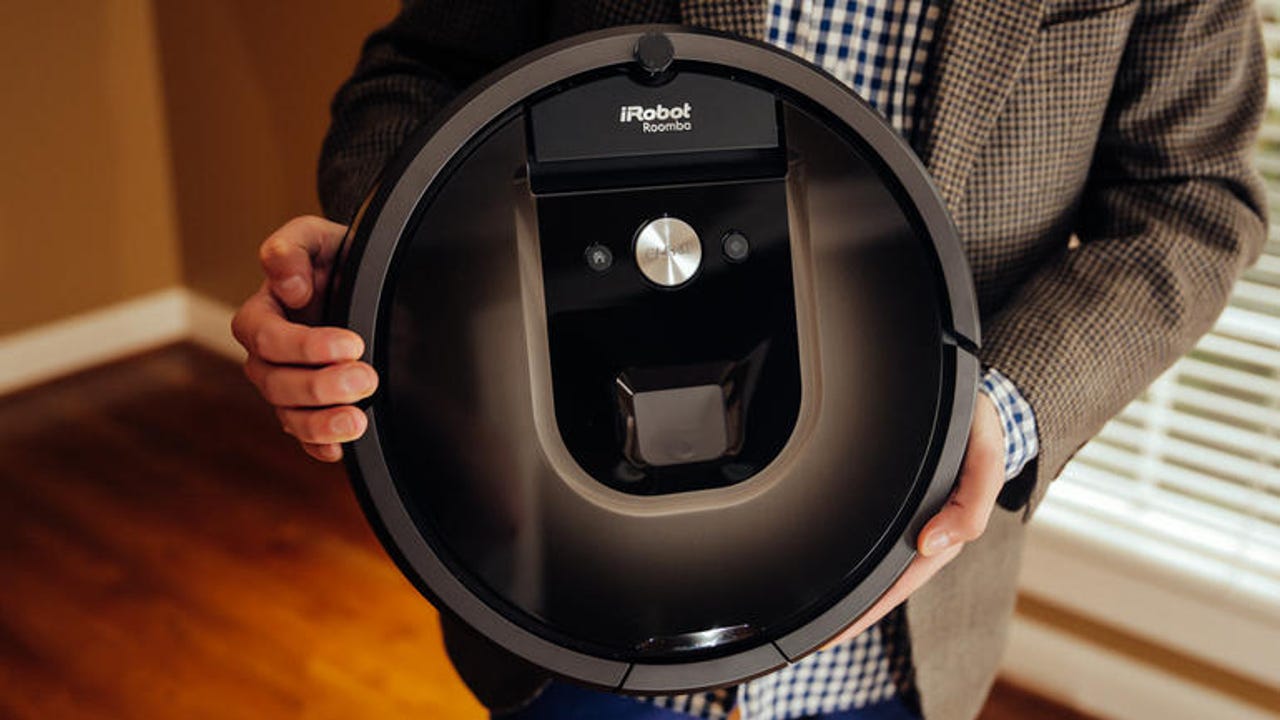Ready for the Internet of Robotic Things?


IoRT is real, although it's still in the initial stages. In the consumer space, for instance, there's iRobot. (Image: ZDNet)
You've likely heard of the Internet of Things (IoT). How about the Internet of Robotic Things (IoRT)?
The concept, first described a few years ago in a report by ABI Research, involves the ability of intelligent devices to monitor events, fuse sensor data from various sources, use local and distributed intelligence to determine the best course of action, and then act to control or manipulate objects in the physical world.
IoRT is real, although it's still in the initial stages, said Dan Kara, practice director of robotics at ABI. Installations are ongoing, as are product announcements from vendors, he says. For example, FANUC announced the initial results of a collaborative development effort with partners Cisco, Rockwell Automation, and Preferred Network .
The joint effort resulted in the FIELD system, an advanced analytics, middleware, and IoT infrastructure platform for FANUC Computer Numerical Control machines and robots, as well as peripheral devices and sensors used in industrial automation systems.
Using FIELD, Kara said, companies can capture operational data from multiple sources in real time, which can then be analyzed and acted upon to optimize manufacturing processes while reducing downtime.
In the consumer space, there's iRobot. "The company maintains that the next frontier for home care products are intelligent robots capable of exploiting cloud-based applications and services, along with smart home integration," Kara said. It will use Amazon Web Services, a cloud infrastructure services platform, as the basis for connecting consumer robotics products with cloud-based applications and services.
Generally speaking, the robotics sector will be accelerated by IoT initiatives, Kara said. "This is similar to the case of the mobile communications market, which exploded over the last 15 years," he said. Huge amounts of money and other resources were directed into the mobile sector, resulting in the development of new, low-cost, powerful technologies.
"The robotics community has benefited from this work," Kara said. "Low-cost, miniature cameras and accelerometers developed for mobile phones and tablets provide just one example. Similarly, the robotics sector benefited from the technical 'tailwinds' resulting from massive amounts of spending and research for defense robotics systems in the early 2000s."
In terms of practical capabilities, IoT technologies, architectures, and standards can be used to provide robotics systems with access to back-end data and compute services in the cloud, input from pervasive, sensored devices in their working environment, and communication with other robotics systems.
"Both commercial and consumer robotics systems can benefit from these capabilities," Kara said. For commercial systems as a whole, IoT, and supporting technologies will increase the intelligence of individual robotics systems, as well as entire IoRT ecosystems, Kara said.
"Smart edge devices can share embedded, local data with robotic systems, describing themselves and providing other information," Kara said. "Combined with additional data captured using the robot's onboard sensors, this enriched set of information can be used by robotic systems to make decisions locally and then act accordingly. Alternatively, this information can be augmented with distributed data and processing in the cloud and subsequently acted upon."
Data security, management, and standards are all challenges in this area, Kara said, but they will not stop progress. "There is a huge impetus behind the IoT market right now, and these issues will be resolved," he said.